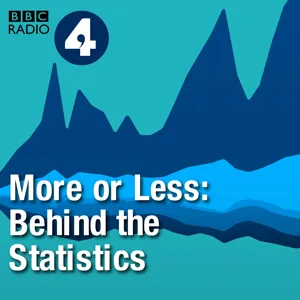Podcast Summary
Medical errors and death statistics: The claim that medical errors are the third leading cause of death in the US is not accurate, as a 2016 study on which this claim is based used questionable methods and has been debunked by experts.
The claim that medical error is the third leading cause of death in the US is not accurate. This misconception stems from a flawed 2016 study published in the BMJ, which was written by Professors Martin McCarry and Michael Daniel from Johns Hopkins University School of Medicine. The study used questionable methods and has since been debunked by experts in the field, such as Professor Mary Dixon-Woods from the Healthcare Improvement Studies Institute at Cambridge University. It's important to fact-check information before spreading it, especially when it comes to matters of life and death. Instead of focusing on medical errors as the third leading cause of death, we should continue to prioritize addressing the top causes, which are heart disease and cancer. Let's strive for accuracy and evidence-based information in our discussions and debates.
Medical errors impact on mortality: Medical errors, as the third leading cause of deaths in the US, contribute significantly to mortality through various preventable adverse events like allergic reactions, pressure ulcers, and healthcare-acquired infections. Improved data collection and care practices are essential to reduce their impact on patient health and mortality.
Medical errors, which include preventable adverse events like allergic reactions, pressure ulcers, and healthcare-acquired infections, are a significant contributor to deaths in the US, estimated to be the third leading cause. These errors can range from severe allergic reactions to fatal ones, and can include failures to diagnose conditions like sepsis early enough. The article emphasizes the importance of better data collection to accurately measure the impact of medical errors on mortality. It's important to note that not all deaths directly caused by medical errors, but rather, they can contribute to or accelerate existing health conditions. For instance, pressure ulcers can cause significant suffering and even death, but it's more likely that patients died from their underlying health conditions rather than the pressure ulcers themselves. Medical errors are a complex issue, and determining the cause of death in these cases can be ambiguous. The article highlights the need for improved care practices to prevent these adverse events and reduce their impact on patient health and mortality.
Medical Errors Statistics: The studies referenced did not definitively establish that medical errors cause 250,000 annual deaths in US hospitals as claimed, due to differences in methods, populations, and error types, and an overestimation of deaths caused by errors.
The studies McCarry and Daniel referenced did not definitively establish that medical errors directly cause 250,000 deaths annually in the US hospitals, as they claimed. Instead, these studies mainly investigated the potential contribution of errors to deaths. The studies had significant differences in methods, populations, and error types. The authors combined these statistics without a rigorous methodology, and their extrapolation of the results to the entire US hospital population was not valid, as many admissions were for reasons other than errors, such as childbirth. This leads to an overestimation of the number of deaths caused by medical errors. It's essential to be cautious when interpreting these findings and to remember that most people die in hospitals due to their underlying health conditions.
Medical errors and fatalities: Medical errors are likely responsible for around 3% of annual deaths in the US, or about 22,165 deaths per year, according to high-quality research.
The common belief that medical errors are the third leading cause of death in the US, with an estimated 250,000 fatalities annually, is likely an overestimation. High-quality research, such as studies conducted by academics at Yale University, suggests that the preventable death rate in hospitals is closer to 3%, or approximately 22,165 deaths per year. These studies, which involve doctors reviewing medical records to determine if deaths were preventable, are imperfect but considered the best available data. The consistent findings across studies, despite being mostly from Europe and Canada, lead experts to believe this rate can be applied to the US. Medical errors remain a significant concern, but the misconception of the scale of preventable deaths in the US needs correction.
Patient safety reporting: Improving patient safety reporting is crucial for accurate data on medical errors and addressing patient safety issues, while WISE offers a solution for global transactions with real-time exchange rates and no hidden fees.
While patient safety is a significant issue, the exact number of deaths caused by medical errors may be subject to debate. The focus should be on improving reporting of medical errors to ensure accurate data. The BMJ has defended a controversial article on this topic, stating that it was a comment piece and did not contain factual errors. Meanwhile, WISE offers a solution for sending and receiving money worldwide at real-time exchange rates, with no hidden fees. The key takeaway from this discussion is the importance of addressing patient safety issues and improving reporting for more accurate data, while also utilizing financial tools like WISE for seamless transactions.

